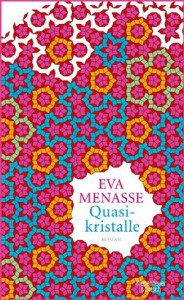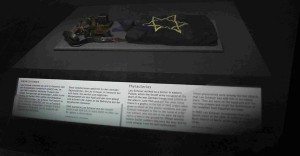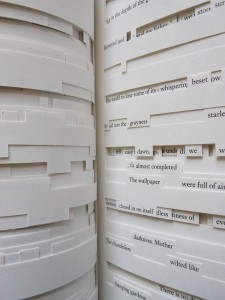A Talk about Jewish Questions, the Lives of Women, and Expectations of Literature
 This blog is edited by three women, all of whom are between their mid-30s and 40. They all studied literature, and try to reconcile to one another their commitment to their profession, their interests, and their private lives. At the center of the latest novel by Eva Menasse, Quasikristalle (2013, ‘Quasicrystals’), is Xane Molin, an at first younger, and then progressively older woman trying to square her career with her wish to be there for her children and to live a good life. In each chapter Quasicrystals takes a different look at her life – and we take different looks at the novel in our discussion here.
This blog is edited by three women, all of whom are between their mid-30s and 40. They all studied literature, and try to reconcile to one another their commitment to their profession, their interests, and their private lives. At the center of the latest novel by Eva Menasse, Quasikristalle (2013, ‘Quasicrystals’), is Xane Molin, an at first younger, and then progressively older woman trying to square her career with her wish to be there for her children and to live a good life. In each chapter Quasicrystals takes a different look at her life – and we take different looks at the novel in our discussion here.
Mirjam Bitter: Since in German substantives referring to persons are not gender-neutral, I re-named our blog’s literature series from the masculine “junge jüdische Autoren”, in more gender-neutral German, to “junge jüdische Autorinnen und Autoren,” that is, “young Jewish women and men authors.” In doing that, it occurred to me that, so far, we have only talked about male authors. What do you think about introducing a woman next?
Mirjam Wenzel: I’m reading Quasicrystals at the moment, by Eva Menasse, and I’m curious what you all think about the book. → continue reading
“Axis of the Holocaust” is the designation of one of three corridors in the museum’s basement. Display cabinets are inlayed in the wall. They contain photographs, pieces of writing, and objects that convey the stories of people who survived or were murdered in the Holocaust.
They contain photographs, pieces of writing, and objects that convey the stories of people who survived or were murdered in the Holocaust.
In one window lie phylacteries and a pouch with an embroidered Star of David. These objects belonged to Leo Scheuer. He gave them to the museum shortly before his death. → continue reading
Searching for a Jewish past is the topic of Jonathan Safran Foer’s Tree of Codes. His best-selling, Hollywood-adapted debut novel Everything is Illuminated (2002) already depicted a young man on a trip to the Ukraine in search of his family’s past.  His new book is also a search for Jewish roots, though this time artistic, rather than biographical.
His new book is also a search for Jewish roots, though this time artistic, rather than biographical.
Experimenting with the concept of absence, the book reproduces parts of Bruno Schulz’s Street of Crocodiles, the English translation of one of two surviving texts of a writer, whose other works were lost when the National Socialists seized his Polish hometown Drohobycz in 1941 and murdered its citizens, including Schulz, in 1942. As if to depict the loss of literature by destroying the letters in a book, Foer cut into Schulz’s pages, leaving only select words and half sentences behind, thereby reducing, already in its title, Street of Crocodiles to Tree of Codes. → continue reading
 This blog is edited by three women, all of whom are between their mid-30s and 40. They all studied literature, and try to reconcile to one another their commitment to their profession, their interests, and their private lives. At the center of the latest novel by Eva Menasse, Quasikristalle (2013, ‘Quasicrystals’), is Xane Molin, an at first younger, and then progressively older woman trying to square her career with her wish to be there for her children and to live a good life. In each chapter Quasicrystals takes a different look at her life – and we take different looks at the novel in our discussion here.
This blog is edited by three women, all of whom are between their mid-30s and 40. They all studied literature, and try to reconcile to one another their commitment to their profession, their interests, and their private lives. At the center of the latest novel by Eva Menasse, Quasikristalle (2013, ‘Quasicrystals’), is Xane Molin, an at first younger, and then progressively older woman trying to square her career with her wish to be there for her children and to live a good life. In each chapter Quasicrystals takes a different look at her life – and we take different looks at the novel in our discussion here.
